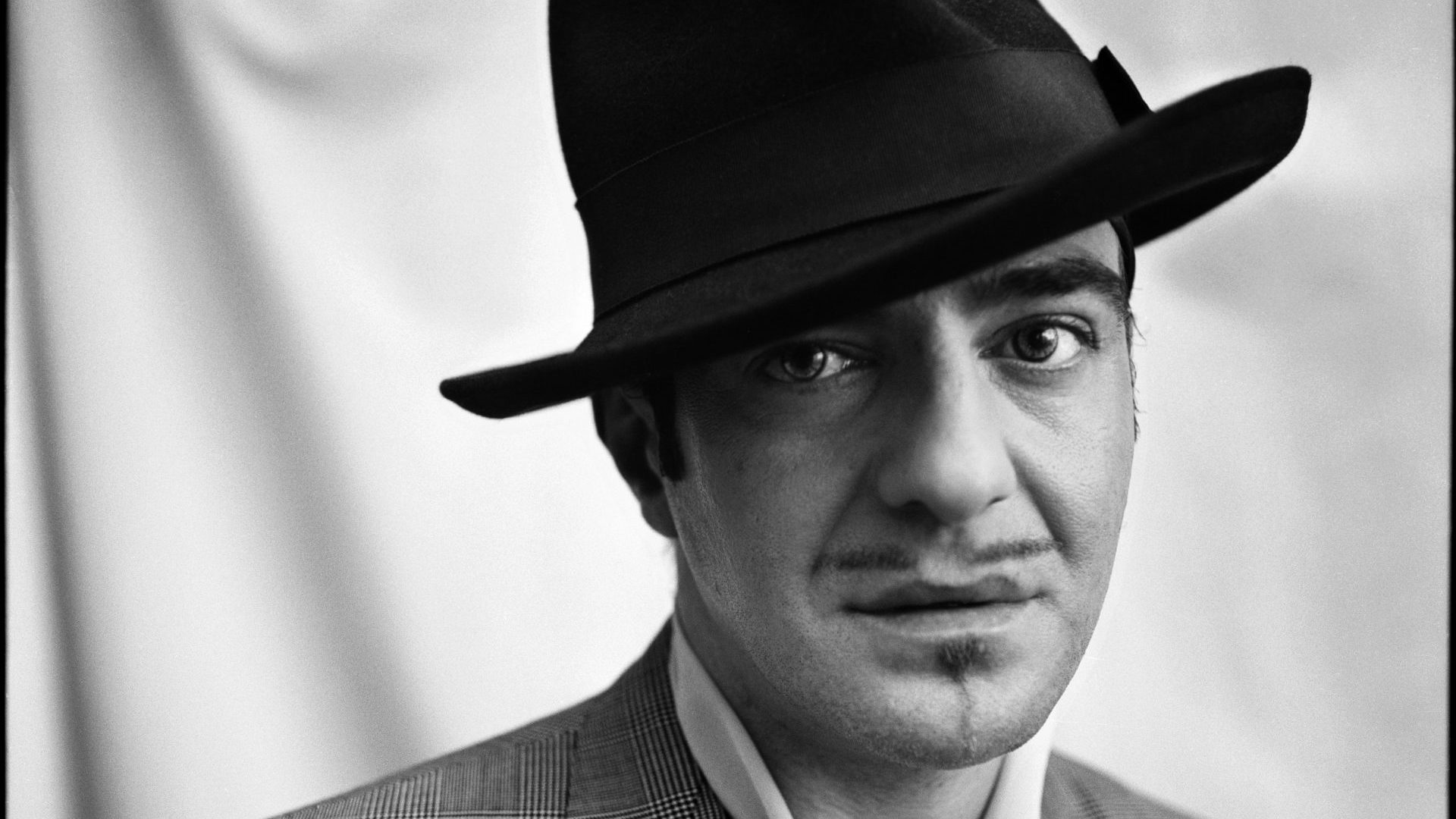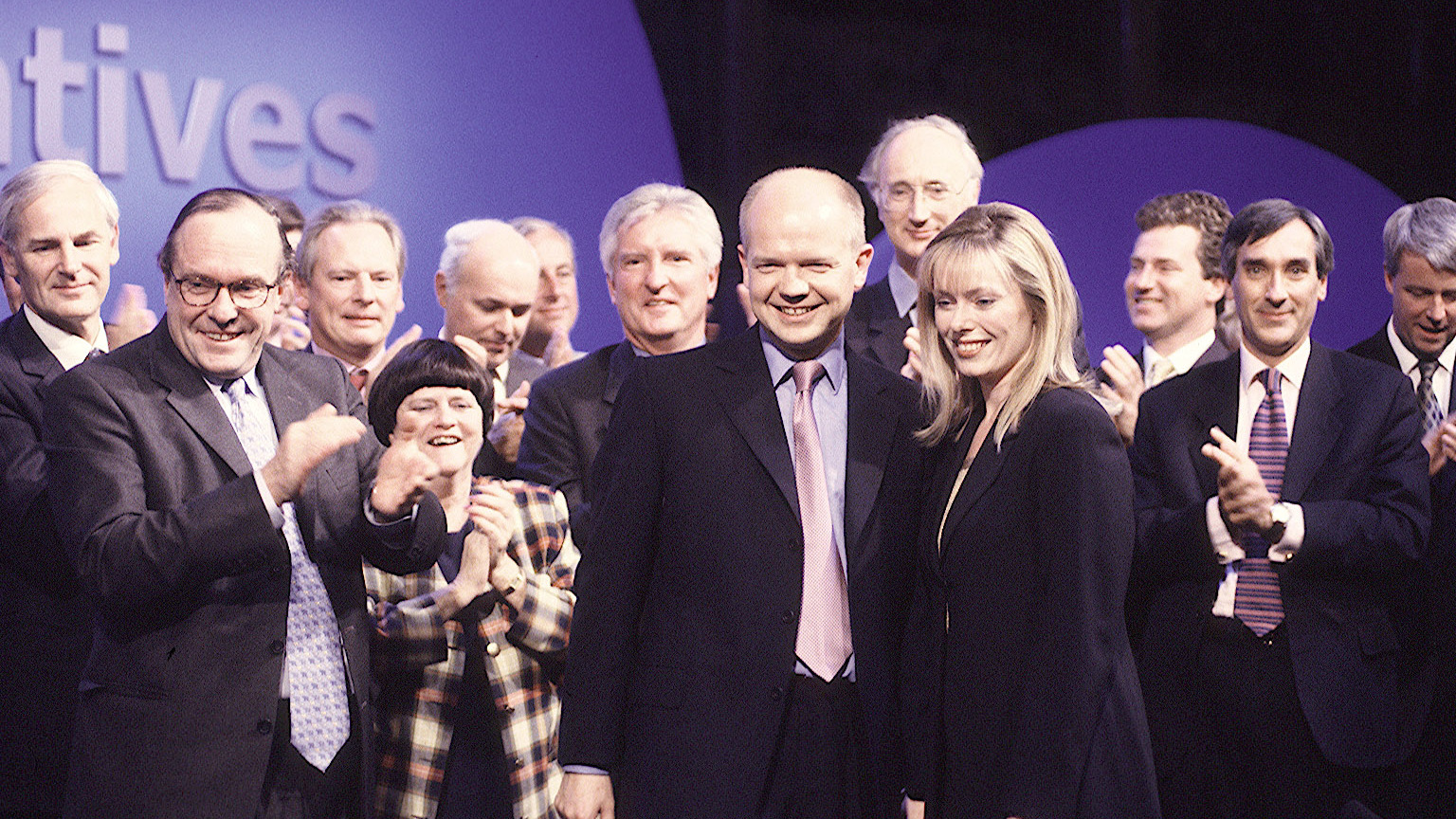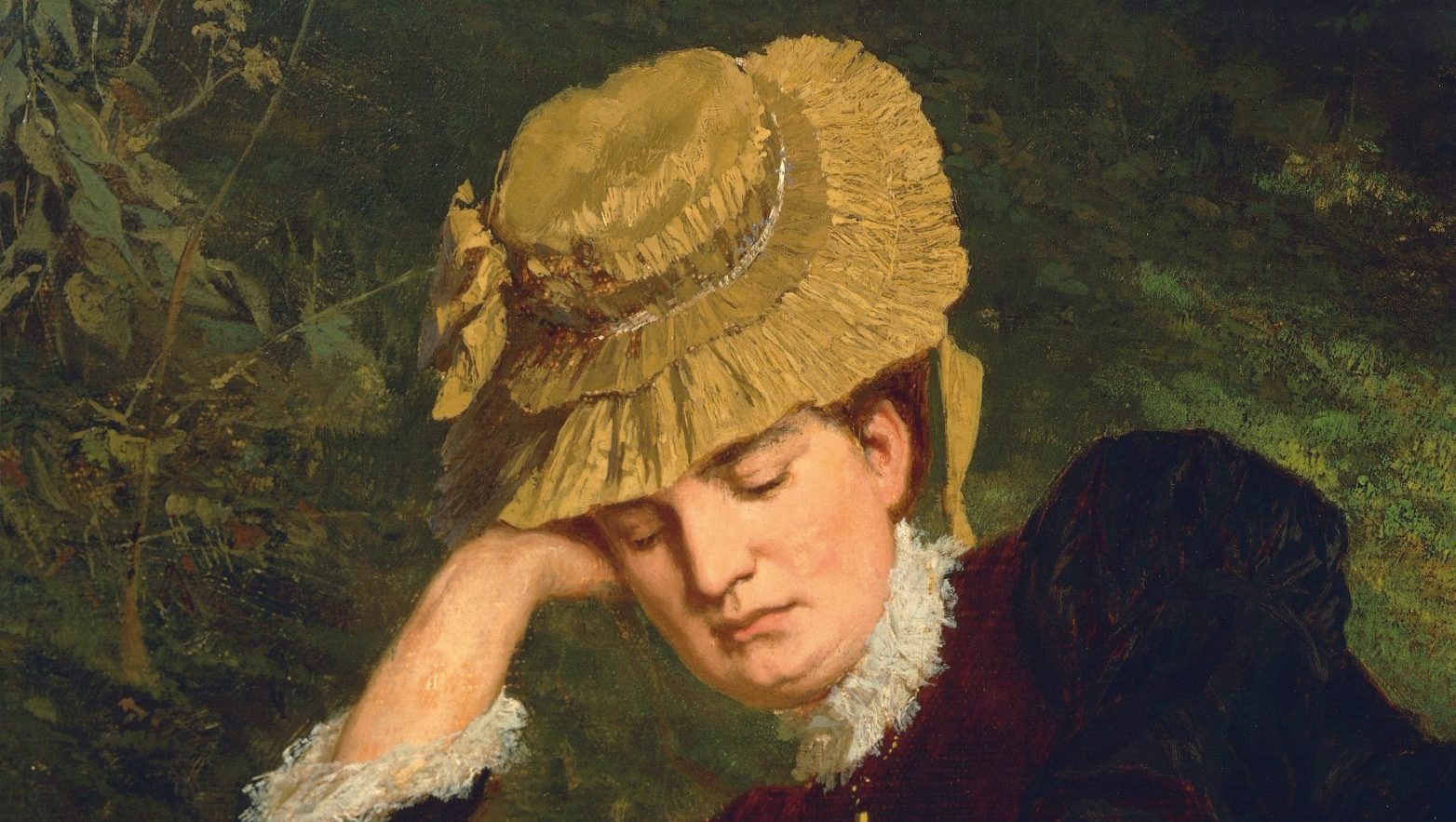Antisemitism is back in fashion. It is all the rage, everywhere you look. Up 589% in the UK abuse charts, rampant in the trendiest colleges and student bars, held aloft on the London streets every weekend and high on the agenda in slogans and speeches at many ceremonies and events this awards season.
And one of the most notorious antisemites of recent years is back at the forefront of couture. I don’t mean Coco Chanel, although of course, her blockbuster exhibition at the V&A has burnished her icon status even further, while, as played by Juliette Binoche in the glossy (and rubbish) Apple TV series The New Look, she sleeps with Nazis and plots revenge on her Jewish business partners.
No, there’s an even greater and more fashionable antisemite at large and restored to the fashion summit. Ladies and gentlemen, I give you John Galliano.
Despite being caught on camera hurling vile, drunken abuse at drinkers in Parisian cafe La Perle in 2011 over the course of three nights, Galliano is now being hailed again as fashion’s true genius. His show as creative director of Maison Martin Margiela last month was greeted as a work of the highest art, prompting headlines such as “The John Galliano Show My Generation Has Been Waiting For”; “Astonishing… Will Change Fashion For Ever”; “Triumphant” “Wowed” “A justification for the continuing relevance of haute couture…”
OK. Let’s stop there. I can’t stand much more. Twelve years ago, when running the prestigious house of Dior, this guy was finished, washed up, cancelled, cut. He uttered some vile stuff about Hitler and death camps and spewed it out in public and was promptly exiled in fashion’s biggest scandal for years.
But now he’s back at the top of the pile and the subject of a new documentary in cinemas. While war rages in Israel and Gaza and the world takes its sides post-October 7, it feels wrong.
“It’s been the singular biggest shift since I first began showing the documentary,” admits Kevin Macdonald, the Oscar-winning, London-based film-maker whose High & Low – John Galliano hits UK cinemas this week, a documentary up there with his very best and most gripping work which has seen him previously look at iconic and problematic figures including Bob Marley, Whitney Houston and Idi Amin.
“Antisemitism, always a light sleeper, has reared its head uglier than ever in the last few months,” admits Macdonald. “To the point that I’ve sometimes wondered if Galliano’s words even appear shocking to audiences anymore. But I’ve tried to work out, where did those sentiments come from?”
Macdonald opens his film with the tirades that went viral in 2011, blurry and scratchy but perfectly, horridly, audible and visible. For all the nuance that goes with qualifying shades of anti-Jewish hatred now, it’s pretty clear Galliano’s outburst is vile antisemitism. As a Jewish person, I hear someone say those things and I tend to think to myself: “OK, I don’t like that bloke – I don’t care how nice a fashion show he puts on, he’s not my type.”
Strangely, that’s not most people’s view, though. The documentary then springs back to examine how Galliano got to this point and why his slurred, inebriated rant sent such shockwaves through the worlds of fashion, celebrity and media. And why he’s really just a poor gay man wrestling with his demons.
It is, I should say, a terrific film to watch, full of flamboyant and wild archive fashion shows, memories of ’80s and ’90s London, Paris couture houses and ateliers, glamorous talking heads – Kate Moss, Naomi Campbell, Anna Wintour, Natalie Portman – and excess, such excess, of sex, drugs, and bitching. And monstrous ego. It’s a great fashion film, a great Paris film, and a thorny, knotty, visually sparkling documentary about how we like to dress things up in modern culture.
The centrepiece is a long sit-down interview with Galliano himself, telling his story “for the first time” and inevitably leading up to some kind of apology for what he did and what he said (although we don’t have to wait to get to this bit – it opens the movie) while Macdonald weaves in his own thoughtful interviews and explorations with the fashion world and with family members, ex-colleagues, collaborators and contemporaries such as rave DJ Jeremy Healy, wondering why Galliano is a) held as such a genius and b) could get away with knowing it and behaving like such an utter maniac.
Popping up throughout are clips of Abel Gance’s 1929 silent epic Napoleon, a film Galliano confesses to having seen at the Barbican when he was a student at St Martin’s and which exerted a huge influence on him. (I mean, at least, it’s a great, great film, let’s be honest). He clearly means this influence was in a fashion sense, though Macdonald sees parallels in the megalomania and overweening arrogance of the little emperor as played by charismatic actor Albert Dieudonné.
It’s a sly, clever cinematic joke, an act of appropriation that seems to be lost on Galliano himself, a man whose entire aesthetic and schtick is based on appropriation, acts of brazen artistic borrowing that fuelled his astonishing rise from early childhood in Gibraltar (ironically, on Sephardi Street, no less) to a humble house in south London to scene-stealing at the hottest fashion college and on the burgeoning gay scene to the spectacular grad shows (“darling, simply everyone remembers Les Incroyables”) to helming the giant businesses of Givenchy and Dior and their attendant grind of creative demands.
The documentary captures it all with a breathless economy and a sense of thrill, as well as an inherently dramatic flair. “I wanted it to feel like he was on a high-speed train of self-destruction,” says Macdonald, a man, by his own admission, not naturally comfortable in the world of fashion.
“There’s such a fine line between bravery and foolhardiness that he was undertaking, that perhaps all fashion at that level requires, and that I hadn’t appreciated at all before entering the bubble myself. It’s like living in a dream, so separated from reality, this existence as if at a royal court. I didn’t want to excuse his behaviour but I do think it’s key to understanding what was going on in his head, his very addled head.”
Macdonald does find himself making excuses for his subject, however, with a whole section on the reliability of the phrase in vino veritas. At the time of the incident, Galliano was on such a cocktail of drugs and alcohol one is almost in admiration of the bottles and vials on display.
“He was a blackout drinker so doesn’t even remember what he said, or how many times he said it. He was on so many drugs and so strung out that this was his rock bottom. He told me: ‘This might be the thing that marks my life but it’s also the thing that saved my life’.”
So is that the point of this documentary? Has Galliano somehow wangled a redemption arc out of this film, expiated and atoned so that he could rise again, having exorcised the ghosts of cancel culture and that pesky whiff of antisemitism (something I now detect in every spritz of Chanel fragrance)?
Redemption is certainly not Macdonald’s intention, I’m pretty certain. Even-handed as any rigorous documentarian would like to remain, for me, the doc-maker gives the clothesmaker just enough fabric with which to hang himself.
It’s obvious to me that Galliano comes across just as he’d like: as an arrogant, deluded, unrepentant, uncontrite, asshole. And everyone loves him for it, or at least indulges him once again – far more important that he makes some daring outfits and puts on a show than feel genuine remorse for what he said and for the people he genuinely hurt with his outbursts – Macdonald presents us with one of the victims of the abuse, a very broken man, much diminished from having to stand up in court and give testimony and be associated with his circus.
“I’ve never had such a split opinion about a film,” says Kevin. “Some feel it’s all been blown out of proportion, that Galliano was drunk, what’s all the fuss about and he should be allowed to get on with making his beautiful things; others hate him and say he’s a disgusting liar and think he should be cast out. The divergence of opinion is amazing to me every time, within the same rows of the same audience.”
Certainly, the dominant narrative in the fashion world is that, OK, Galliano has taken his punishment but he should now be forgiven his racist diatribes – the one about being put on trains to Auschwitz, the slurred praise of Hitler – and be allowed to get on with his genius shows. And my, just look what he’s done with Margiela, how fabulous.
“Perhaps it is glib to deal with something as serious antisemitism and something as light as fashion in the same breath, but ultimately, I’ve just got the black box of somebody’s head to try and fathom,” says Kevin. “Galliano is uncensored, has no PR, he never interfered with the film, never told me what I should show or not, and always tried to present himself as honest, as far as he saw it and I do kind of admire him for it – but, it’s true, he never admits why he said these things about Jews. In his head, he feels he did apologise.
“As far as I pushed him, he says he just doesn’t know why he said those things, repeatedly. Does he really not remember? Does he really not know where or why he harboured those feelings of such violent intent?”
It is hard for people to admit they hate Jews. Especially if they retreat into a fantasy world of beauty and frippery and denial, a world that sets itself apart and above and which can summon those arbiters of moral rectitude Naomi Campbell and Anna Wintour as character witnesses.
One of Galliano’s bosses at LVMH Fashion Group was Sidney Toledano, a Jewish man with one of the great Sephardi names – and also president of the French Haute Couture Union Chamber. If Galliano was strung out using up all his genius to feed the toxic monster of his muse and the fashion industry and its parent group, run by a Jew, then it might be obvious where his invective stemmed from. We see how it even drove his best friend Stephen to suicide. But Galliano, even when pressed here, doesn’t or won’t admit all that. And Sidney himself seems prepared to forgive – or at least to start making money off the back of Galliano again.
Is this, I wonder, to be hung on the ever-lengthening rail of separating the art from the artist? For his camp catty excesses, can’t we just let Galliano’s work do the talking? Inevitably, he will talk himself into trouble anyway – a recent Margiela show made dramatic use of a school shooting and prompted a US journalist to walk out; his 2000 “Haute Homeless collection” of ‘Queens and Clochards’ (tramps, in French) was widely panned; and, sooner or later, he’ll co-opt a look that offends, be it dreadlocks or Orthodox Jew.
Is all that just part of being at the edge of boundary-pushing fashion creativity, or is there something in this artist that just enjoys provoking? Perhaps he doesn’t mean any of it, or anything at all – it’s just fashion, just clothes, just art on an artist.
And in cancel culture terms, is spouting antisemitism really that bad? I mean it’s not like raping a minor, like one of those old Jewish film-makers we could mention…
These are the highs and the lows and the way back in the world of high fashion. And the way we can ignore the elephant in the room if the elephant’s wearing a nice enough outfit.
Or, at least, the way we can lessen antisemitism and reduce it, pack it away in a nice box with a ribbon and forgive it because, you know, art, clothes, beautiful people. What’s the harm in a little deep-seated racism every now and then on a night out? A genius has got to let off steam.
Except right now, antisemitism isn’t in a box. It’s on display and flying off the shelves, back in fashion. And that’s why High & Low is such a compelling film to watch and discuss.
High & Low – John Galliano is in UK and Ireland cinemas from March 8 and later streaming on MUBI




